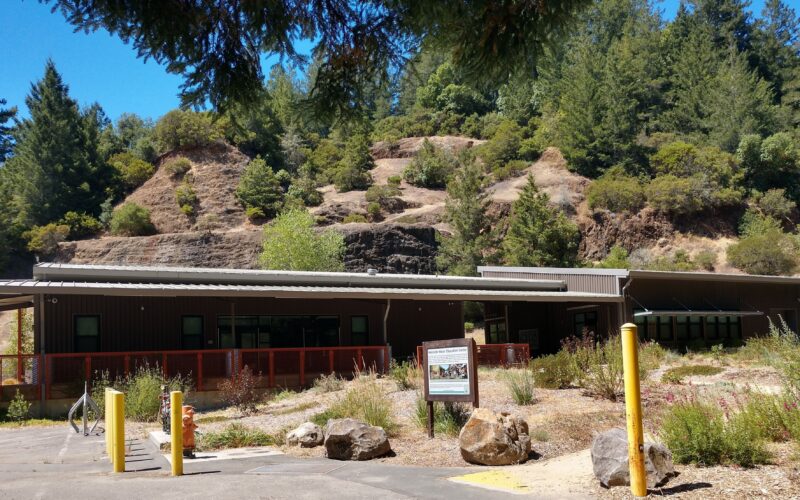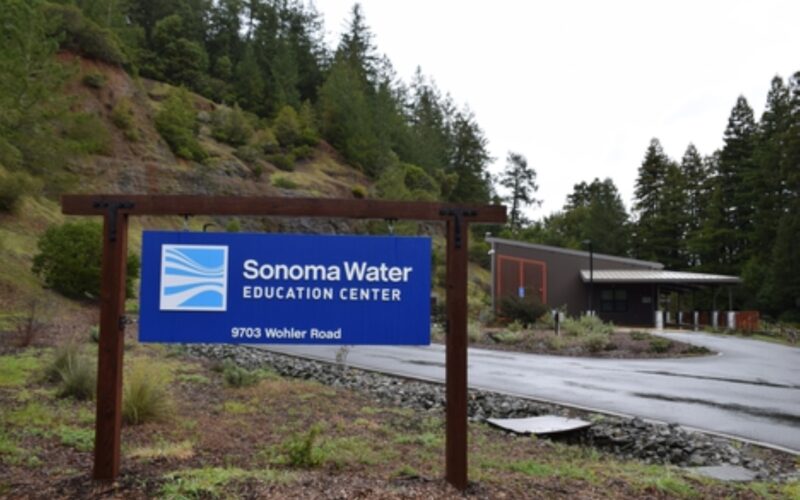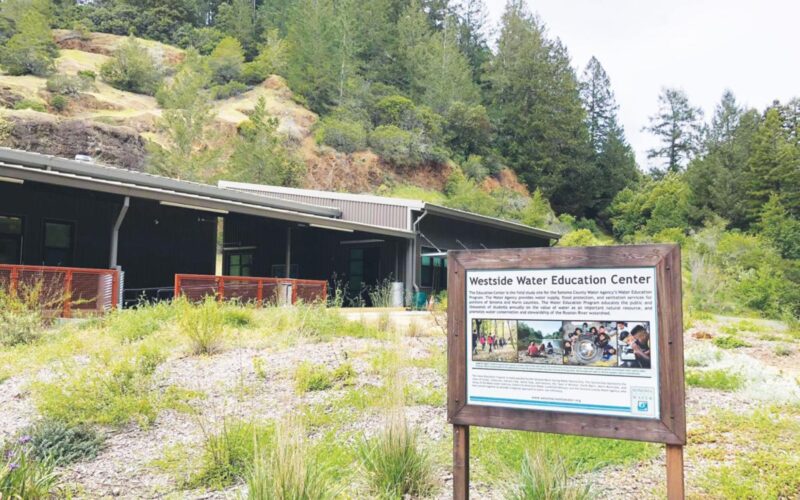Water Education Center
BACK TO FULL TOUR
Garden Features
Bees
Drought Tolerant
California Natives
Rainwater Harvesting System
Rain Garden
Wildlife Habitat
Partner: Sonoma-Marin Saving Water Partnership
Established in 2015 alongside the construction of a state-of-the-art classroom and laboratory facility, the garden at the Water Education Center occupies the grounds of a former rock quarry nestled at the convergence of Westside and Wohler Roads in the heart of western Sonoma County. Since its inception, this verdant space has evolved into the cornerstone of Sonoma Water’s K-12 water education initiative. Positioned along the banks of the Russian River, the Center offers a unique platform for countless local students to delve into the intricacies of the Russian River watershed and the intricate network that supplies potable water to over 600,000 individuals on a daily basis.
A central aim of the typical 4-hour excursion to the Water Education Center is to instill in students an acute awareness of water conservation imperatives, particularly pertinent in our drought-prone locale and against the backdrop of a changing climate. Within the garden’s confines, students are introduced to sustainable water management techniques, ranging from the selection of drought-resistant flora to the implementation of practices like sheet mulching, drip irrigation, and the installation of blue barrels for capturing roof runoff. Moreover, they learn firsthand how bioswales function to attenuate, cleanse, and sequester water into the earth.
Encouraged to engage their senses, students immerse themselves in the garden’s sensory delights, from the smooth, cool bark of a Madrone tree to the sweet fragrance exuded by Lemon balm leaves, or the jagged texture of Coast live oak foliage. These sensorial encounters foster the development of their scientific observation skills, which they employ throughout their visit.
Furthermore, the garden serves as a conduit for understanding the intrinsic human-plant connections. Students are captivated by the historical and medicinal uses of various plants, often clandestinely pocketing Mugwort leaves upon learning of their significance in Native American cultures for promoting restful sleep and vivid dreams.
The garden’s allure extends beyond flora to fauna, with educators leveraging the presence of creatures like Anna’s hummingbirds and a myriad of butterfly species—Pipevine swallowtails, Red admirals, and Common buckeyes—to captivate students’ interest.
Plants, with their diverse attributes, offer boundless educational opportunities. Yet, amidst the wealth of learning possibilities, educators grapple with the constraints of time during the compact 4-hour field trips.
A sojourn to the Water Education Center and its lush garden beckons as a family-friendly escapade across the Russian River, traversing the single-lane Wohler Bridge and meandering through a native plant oasis before entering the classroom, where discoveries abound regarding plants, our watershed, and the origins of our water supply. Bring along a packed lunch and relish a picnic beneath the towering Redwoods of the adjacent Maxwell Grove—a perfect conclusion to an enriching educational odyssey.


